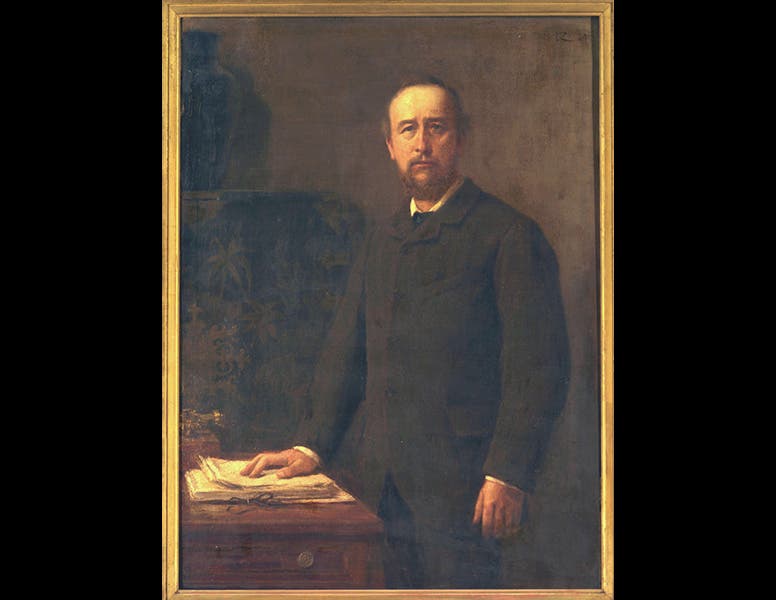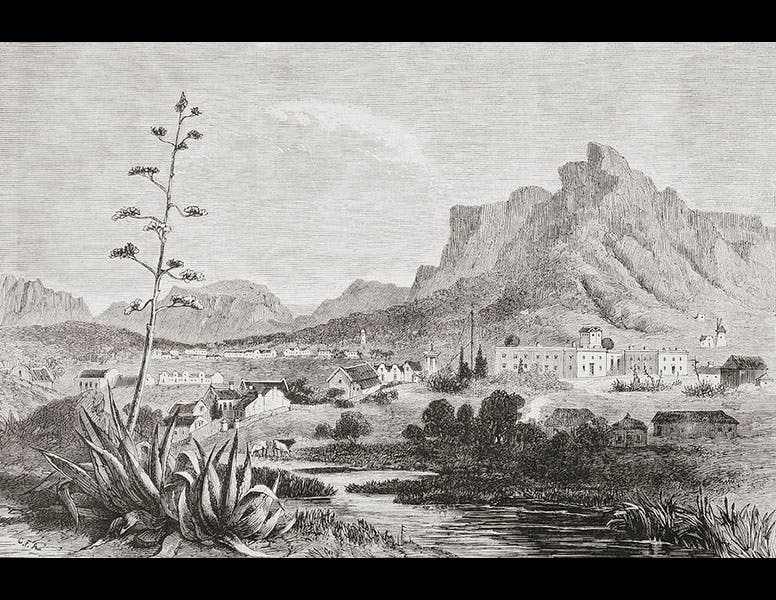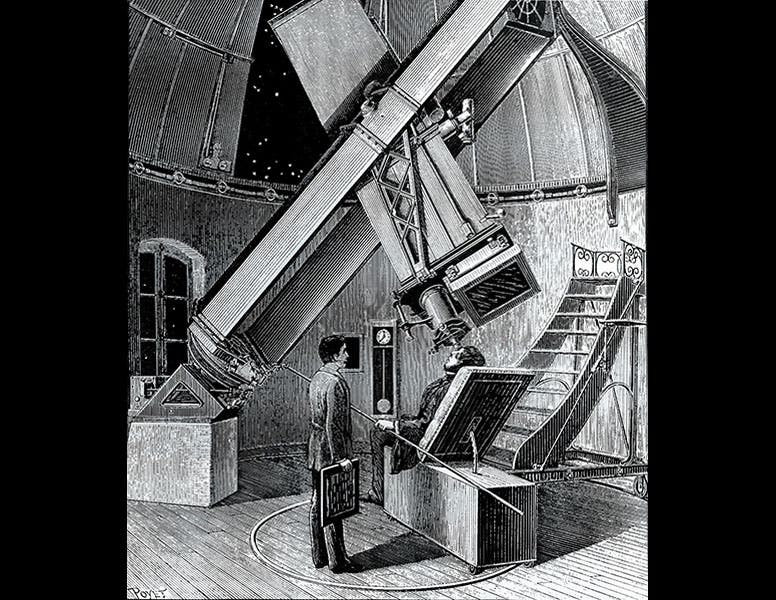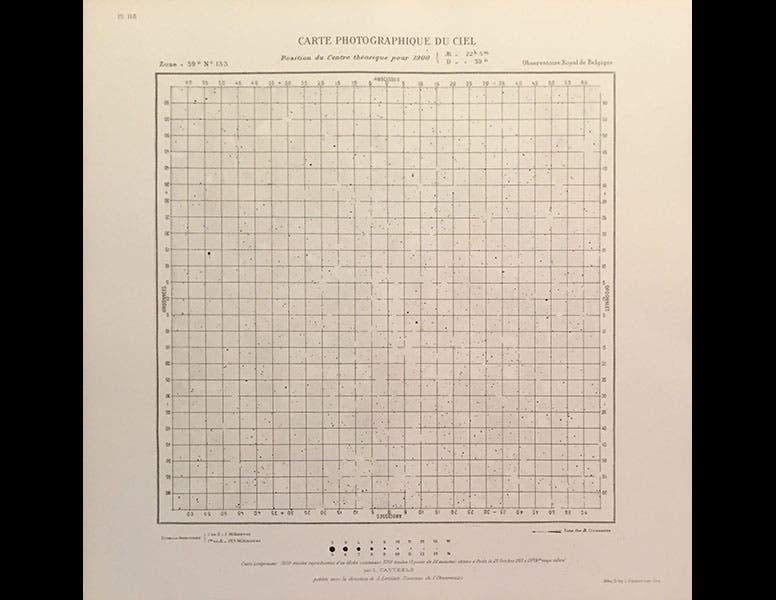Scientist of the Day - David Gill
David Gill, a Scottish astronomer, was born June 12, 1843. Gill, director of the Royal Observatory at Cape Town, South Africa (third image), was a pioneer in astrophotography. By 1880, amateur astronomers had used photographs to record images of the moon and prominent nebulae such as the Great Nebula in Orion. But professional astronomers were generally distrustful of photography and did not believe it could ever replace visual observation. In fact, the 1881 Congress of the Transit of Venus actually condemned photography as an astrometric tool.
Gill had been active in photography since the 1860s, and when a prominent comet appeared in 1882, he sought the aid of a professional photographer and they collaborated on several successful photographs of the Great Comet of 1882 (first image). Gill noticed that in addition to recording the comet, they had also photographed a field of stars, and while the star positions were blurry, because they were tracking the comet, the star images could be made more precise if one tracked the stars, recording position as well as magnitude. It occurred to Gill that it might be possible to create a star atlas based on photographs instead of visual observation. He immediately began what was called the Cape Photographic Durchmusterung, a project in which the sky was divided into a large number of 5° by 5° fields, each one photographed by an astrographic camera. Meanwhile, Gill's ideas about photographing the stars inspired the Henry brothers in Paris to construct a special astrographic telescope in 1885 to record the stars on photographic plates (fourth image). Gill and the brothers Henry then convinced E. B. Mouchez, director of the Paris Observatory, to call an international congress in 1887 to consider the possibility of collaborating on producing a photographic star chart of the complete heavens. The Carte du Ciel project was off and running, and it would occupy many observatories for the next eighty years. Over 22,000 plates were taken by 18 different observatories (for a sample, see fifth image), and although the project was in some ways a failure (88,000 plates were needed to complete the survey), the Carte du Ciel directly inspired later enterprises that were successful, such as the Palomar Observatory Sky Survey (POSS), completed in 1958. In a sense, the POSS was the grandchild of Gill’s photograph of the Great Comet of 1882.
Dr. William B. Ashworth, Jr., Consultant for the History of Science, Linda Hall Library and Associate Professor, Department of History, University of Missouri-Kansas City. Comments or corrections are welcome; please direct to ashworthw@umkc.edu.











